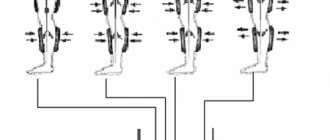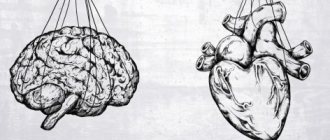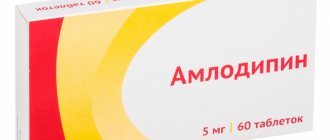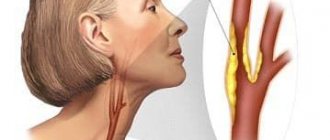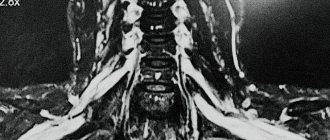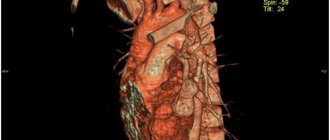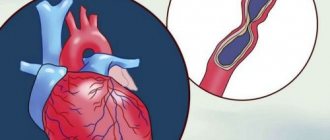Hypertensive crisis is a sharp rise in blood pressure (BP), accompanied by symptoms of cerebrovascular accident, left ventricular failure, and autonomic reactions. The causes of hypertensive crises in children are usually secondary (symptomatic) arterial hypertension.
Clinical manifestations:
1. A sharp piercing headache of frontal or occipital localization lasting several hours/day.
2. Pronounced vegetative manifestations:
- nausea, vomiting;
- abdominal pain;
- sweating;
- paleness or hyperemia of the face.
3. Symptoms of cerebrovascular accident: ringing in the ears, dizziness, darkening of the eyes, spots before the eyes, tremors of the hands, convulsions.
4. Shortness of breath as a manifestation of left ventricular failure; tense and rapid pulse.
5. Blood pressure reaches high numbers (160–180/90–110 mm Hg).
Tactically, there are two levels of hypertension in children: from the 95th to the 99th age centile (does not require emergency treatment, only routine examination and treatment) and above the 99th centile (needs emergency blood pressure correction). Age indicators of significant (severe) arterial hypertension (BP levels above the 99th centile), requiring immediate reduction in blood pressure, are given in Table. 1.
Antihypertensive drugs should also be used in cases where the child develops threatening symptoms: headache, repeated vomiting, disorientation, convulsions, cardiac dysfunction.
The main goal of stopping a hypertensive crisis is a controlled reduction in blood pressure to a safe level to prevent complications. Due to the risk of severe arterial hypotension, it is not recommended to rapidly reduce blood pressure. A rapid drop in blood pressure can cause a decrease in blood supply to the brain, especially in situations where pulse blood supply was low, and lead to the development of cerebral ischemia and even cerebral infarction. Typically, a decrease in blood pressure to a normal level (below the 95th centile for a given gender, age and height) is carried out in stages: in the first 6–12 hours, blood pressure is reduced by 1/3 of the planned decrease; during the first day, blood pressure is reduced by another 1/3; over the next 2–4 days, complete normalization of blood pressure is achieved.
To relieve a hypertensive crisis it is necessary:
- creating the most relaxed environment possible;
- use of antihypertensive drugs;
- sedative therapy.
There are a number of therapeutic techniques for relieving emergencies associated with arterial hypertension. The choice of treatment methods depends on the clinical situation and the experience of the doctor. The classification given below (according to D. Lawrence, P. Bennit, 1991) helps to navigate the variety of medications used for arterial hypertension.
Vasodilators
Hydralazine is a direct-acting vasodilator, most effective when administered intravenously, and an immediate effect is achieved; when administered intramuscularly, the effect occurs within 15–30 minutes. The drug does not affect renal blood flow and rarely leads to orthostatic hypotension. Used at an initial dose of 0.15–0.2 mg/kg intravenously. If there is no effect, the dose may be increased every 6 hours to a maximum of 1.5 mg/kg. Hydralazine is most effective in combination with diuretics or other antihypertensive drugs for intravenous administration. Main side effects: tachycardia, nausea, vomiting, headache, diarrhea. Positive tests for LE cells and rheumatoid factor are very rare in children. The drug is not used for arrhythmias and heart failure. Efficiency is inconsistent.
Sodium nitroprusside is an arteriolar and venous dilator. It increases renal blood flow with minimal effect on cardiac output and controls blood pressure when administered intravenously. The drug acts quickly and is effective even in cases where other means are unsuccessful. By adjusting the infusion rate, the desired blood pressure can be achieved. Administered as an intravenous infusion with constant monitoring in the intensive care unit. The prepared solution is inactivated by light. Along with nitroprusside, other drugs cannot be administered through the same venous catheter. The initial dose in children and adolescents is 0.5–1 mcg/kg/min with a subsequent dose increase to 8 mcg/kg/min. Monitoring the level of thiocyanate in the blood is required, since nitroprusside is converted to thiocyanate in the liver by thiosulfate sulfide transferase. In case of liver failure, the drug is used with caution. Constant monitoring in the intensive care unit is required. At the end of the infusion, the effect of the drug ceases immediately. With prolonged use (> 24 hours), metabolic acidosis may occur.
Diazoxide is a second-line drug for rapidly lowering blood pressure. It belongs to the benzothiazides, has no diuretic effect and acts directly on the smooth muscles of blood vessels, reducing muscle tone; does not reduce renal blood flow. It is administered only intravenously at a dose of 1 mg/kg in a rapid stream, which allows achieving the greatest vasodilation with minimal binding to blood proteins. The effect lasts 3–15 hours. If the initial dose is not enough to achieve an effect, the administration is repeated at intervals of 15–20 minutes (maximum dose - 5 mg/kg). The disadvantage is the inability to regulate the decrease in blood pressure. Side effects: hyperglycemia, sodium and water retention; Transient tachycardia often occurs.
Alpha blockers
Prazosin is a selective alpha-1 adrenergic blocker. It is characterized by a relatively short antihypertensive effect. Rapidly absorbed from the gastrointestinal tract (half-life - 2-4 hours). When taking the first dose of the drug, the most pronounced therapeutic effect is observed, orthostatic dysregulation is possible. Therefore, after taking the drug, the patient should be in a horizontal position. The initial dose is 0.5 mg.
Phentolamine is a non-selective alpha-blocker that causes short-term and reversible blockade of both postsynaptic alpha-1-adrenergic receptors and alpha-2-adrenergic receptors. Phentolamine is an effective antihypertensive drug with short-term action. The drug is used to treat hypertensive crisis in pheochromocytoma. Side effects are associated with blockade of alpha-2 adrenergic receptors (palpitations, sinus tachycardia, tachyarrhythmia, nausea, vomiting, diarrhea, etc.). Phentolamine is administered intravenously by drip or slow stream in 20 ml of saline sodium chloride solution (2 mg, but not more than 10 mg, every 5 minutes) until blood pressure normalizes.
First aid for hypertensive crisis
Of course, professionals can professionally and competently help a person whose condition is progressing, but everyone also needs to know the rules of first aid in a critical situation. In a hypertensive crisis, it is as follows:
- The patient is given a lying position so that the head and chest are slightly elevated - this will provoke the outflow of blood from the upper body and make breathing easier.
- If hypertension was previously diagnosed and the doctor has already made prescriptions, you need to take the drug in the prescribed dosage - a decrease in blood pressure of a maximum of 30 mm Hg per hour is allowed.
- The patient must take any sedative - it can be validol or valocordin.
Please note: you cannot shake, transport, lift or turn the patient over - in case of a hypertensive crisis, complete rest is indicated for him.
All of the above measures should be carried out after the ambulance team has been called. As a rule, such patients are immediately admitted to a hospital, and already in the medical institution, doctors carry out all the necessary examinations, make appointments, and often everything begins with placing the patient in the intensive care unit. Treatment is carried out as follows:
- If a hypertensive crisis occurs without complications, the patient is prescribed oral antihypertensive drugs that can gradually reduce blood pressure. The drugs are used with caution because they can cause a sharp drop in blood pressure.
- After the patient’s condition is stabilized, he undergoes a full examination and finds out which organs were negatively affected during the crisis. The patient is prescribed a course of treatment on an individual basis.
- For several days after a hypertensive crisis, the patient must still remain in the hospital. Doctors monitor his condition, regularly measure his blood pressure, and gradually return to normal physical activity.
If the request for qualified medical help took place on time, the patient will be prescribed outpatient treatment. As a rule, it consists of regular use of antihypertensive (pressure-lowering) medications, control of blood pressure and gradually increasing physical activity.
Specialized sanatorium-resort treatment also has a good effect, which helps restore health and stabilize the functioning of the heart and blood vessels. An integrated approach to the treatment of the condition in question is the key to a favorable prognosis.
Beta blockers
These drugs are used to eliminate excessive sympathotonic effects in cases where an increase in blood pressure is accompanied by pronounced tachycardia and heart rhythm disturbances. Preference should be given to selective beta-1 blockers.
Propranolol is a non-selective beta-blocker and is recommended to be taken orally. The usual dose for IV administration is 0.5–1 mg with close monitoring. IV propranolol is a backup treatment in life-threatening situations.
Atenolol is used at a dose of 0.7 mg/kg body weight. In more severe cases, when atenolol is ineffective, intravenous infusions of esmolol are used.
Esmolol is an ultra-short-acting selective beta-1 adrenergic blocker (about 9 minutes) and does not have intrinsic sympathomimetic or membrane-stabilizing activity. The hypotensive effect of the drug is due to negative chrono- and inotropic effects, a decrease in cardiac output and total peripheral resistance. When administered intravenously, the effect occurs within 5 minutes. During the first minute, the drug is administered at an initial dose of 500–600 mcg/kg. If there is no effect, the dose may be increased by 50 mcg/kg/min every 5–10 minutes, up to a maximum of 200 mcg/kg/min. Side effects: hypotension, bradycardia, decreased myocardial contractile function, acute pulmonary edema. There is little experience using it in children.
Labetalol is a selective alpha and non-selective beta blocker.
The initial dose is 0.25 mg/kg IV, then increased by 0.5 mg/kg every 15 minutes to a total dose of 1.25 mg/kg. The drug can also be administered as an intravenous infusion at a rate of 1–3 mg/kg/hour. Unlike other vasodilators, it does not cause reflex tachycardia. The dose does not depend on renal function. Unlike other beta-blockers, it does not affect glucose metabolism. It acts quickly (within 30 minutes), half-life is 5–8 hours. After normalization of blood pressure, the drug is taken orally. With both short-term and long-term therapy, in rare cases, liver damage is observed (usually reversible, but necrosis is also possible). It is necessary to monitor biochemical indicators of liver function and immediately discontinue labetalol if they change.
Publications in the media
Hypertensive crisis is a sudden increase in systolic and/or diastolic blood pressure, accompanied by signs of deterioration of cerebral, coronary or renal circulation, as well as severe autonomic symptoms. A hypertensive crisis, as a rule, develops in untreated patients with abrupt cessation of antihypertensive drugs, and may also be the first manifestation of hypertension or symptomatic arterial hypertension in patients who do not receive adequate treatment. Statistical data. 1% of patients with arterial hypertension.
Clinical manifestations • Clinically, a hypertensive crisis is manifested by an increase in blood pressure, may be accompanied by the occurrence of: •• acute hypertensive encephalopathy •• subarachnoid hemorrhage •• stroke •• MI •• acute left ventricular failure in the form of pulmonary edema •• aortic dissection •• acute renal failure • In hypertensive crisis of patients may be disturbed by severe headache, severe dizziness, visual impairment in the form of decreased acuity and loss of visual fields, chest pain (due to myocardial ischemia, aortalgia), palpitations, shortness of breath • When examining the patient, signs of target organ damage should be identified: •• changes fundus (narrowing of arterioles, hemorrhages, exudates, swelling of the optic nerve nipple) •• dysfunction of the left ventricle (tachycardia, “gallop rhythm”, pulmonary edema, dilatation of the veins of the neck) •• cerebral circulation disorders (neurological signs).
Additional examination. In a clinical setting, in addition to measuring blood pressure, it is necessary to conduct a chest x-ray, ECG, fundus examination, blood and urine tests. If possible, blood pressure monitoring is recommended (preferably intra-arterial).
TREATMENT
General tactics • Intensive therapy • Bed rest • Favorable psychological environment • Diets No. 10, 10a • Intensive therapy with intravenous administration of antihypertensive drugs against the background of constant blood pressure monitoring (optimally - using an arterial catheter) • After normalization of blood pressure - selection of antihypertensive drugs for systematic use • From a clinical point of view, it is advisable to distinguish emergency conditions when it is necessary to reduce high blood pressure within 1 hour, and conditions when it is possible to reduce high blood pressure within several hours (a decrease in mean blood pressure by approximately 20-25% of the initial or diastolic within 1 hour Blood pressure up to 100–110 mm Hg) • Conditions in which it is necessary to reduce blood pressure within 1 hour •• Aortic dissection (dissecting aortic aneurysm) •• Acute heart failure •• MI •• Unstable angina •• Severe nosebleeds • • Encephalopathy •• Intracranial hemorrhage •• Subarachnoid hemorrhage •• Skull trauma •• Eclampsia •• Catecholamine crisis in pheochromocytoma •• Postoperative bleeding from the area of vascular sutures • Conditions in which blood pressure can be reduced within several hours (12–24 hours) • • Systolic blood pressure 240 mm Hg. and/or diastolic blood pressure 130 mm Hg. and more without complications •• Malignant arterial hypertension without complications •• Arterial hypertension in the pre- and postoperative period •• Severe withdrawal syndrome of antihypertensive drugs •• Severe burns •• Renal crisis in scleroderma
Drug therapy • Drugs for relief of hypertensive crisis •• Sodium nitroprusside 0.25–10 mcg/kg/min intravenously, onset of action is immediate, duration of action is 1–2 min •• Nitroglycerin 5–100 mcg/min i.v. by drip, onset of action - 2-5 minutes, duration of action - 3-5 minutes •• Enalapril 1.25-5 mg IV, onset of action - 15-30 minutes, duration of action - 6 hours •• Esmolol 250-500 mcg/kg/min over 1 min, then 50–100 mcg/kg/min over 4 min, onset of action 1–2 min, duration of action 10–20 min •• Phentolamine 5–15 mg IV bolus, onset action - 1-2 minutes, duration of action - 3-10 minutes •• Bendazole 50-70 mg IV bolus, onset of action - 10-15 minutes, duration of action - 1 hour or more •• Clonidine 0.075-0.150 mg IV c slowly, onset of action - 10-20 minutes, duration of action - 4-8 hours •• Captopril 6.25-50 mg orally, onset of action - 15 minutes, duration of action - 6-8 hours •• Furosemide 20-120 mg c /in bolus, onset of action - 5 minutes, duration of action - 2 hours • Recommendations for the treatment of conditions requiring a decrease in blood pressure within 1 hour •• Hypertensive encephalopathy: sodium nitroprusside •• Subarachnoid hemorrhage: nimodipine, sodium nitroprusside •• Ischemic stroke: nitroprusside sodium •• MI: nitroglycerin, sodium nitroprusside •• Acute left ventricular failure: sodium nitroprusside, nitroglycerin •• Aortic dissection: b-blockers, sodium nitroprusside •• AKI: sodium nitroprusside •• Eclampsia: magnesium sulfate, hydralazine, slow calcium channel blockers • • Hyperadrenergic conditions (pheochromocytoma, clonidine withdrawal, cocaine use, amphetamines): phentolamine, sodium nitroprusside, clonidine (with clonidine withdrawal syndrome) •• Hypertensive crisis in the postoperative period: nitroglycerin, sodium nitroprusside
Features of reducing blood pressure in various conditions • In case of cerebrovascular accidents, mean blood pressure should be reduced by no more than 20–25% of the initial level or diastolic blood pressure should not be lower than 105–110 mm Hg. It is recommended to maintain this level of blood pressure for several days from the moment it increases. • In older people, even small doses of antihypertensive drugs when taken orally can significantly reduce blood pressure and lead to arterial hypotension.
Course and prognosis. With adequate therapy, the prognosis is favorable. In severe cases, the crisis is complicated by coma, pulmonary edema, stroke, thrombosis and embolism of various arteries, acute renal failure. A sharp decrease in blood pressure can lead to acute disruption of cerebral and coronary circulation.
Calcium channel blockers
Nifedipine is an effective drug for relieving hypertensive crises. The drug is administered sublingually or orally at a dose of 0.25 mg/kg. The effect develops at the 6th minute, reaching its maximum at the 60–90th minute.
Verapamil helps reduce blood pressure by reducing peripheral vascular resistance, arteriolar dilatation, diuretic and natriuretic effects. Oral administration of the drug at a dose of 40 mg is possible; if ineffective, slow intravenous administration at a rate of 0.1–0.2 mg/kg.
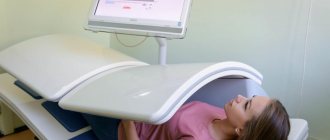
![Rice. 1. ACCOMPLISH study: the effect of the combination of ACE inhibitor* amlodipine and ACE inhibitor hydrochlorothiazide on the risk of primary endpoint events (CVE) [14]](https://expert35.ru/wp-content/uploads/ris-1-issledovanie-accomplish-vliyanie-kombinacii-iapf-amlodipin-i-iapf-330x140.jpg)
